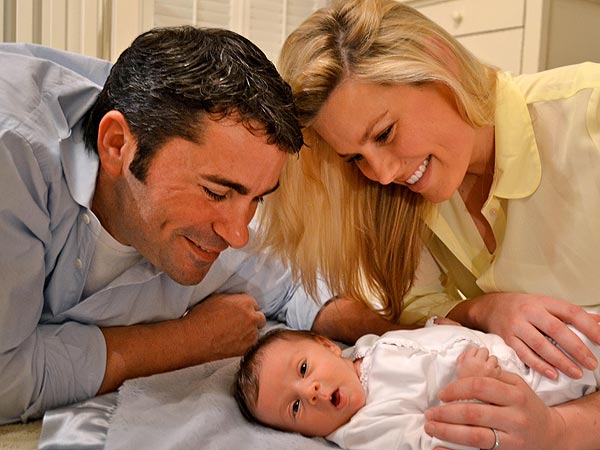One night on Mt. Wilson about 1908, a short, powerfully built man with a handlebar mustache looked through the largest telescope in the world. What he saw transformed him, and would put Los Angeles at the forefront of a movement to make astronomy the people's science.
We may never know whether Col. Griffith J. Griffith saw the rings of Saturn or another celestial object with the then-new 60-inch reflector telescope, but we can be sure that it inspired his vision of a world-class observatory for the people of Los Angeles, allowing the masses a glimpse of the heavens.
"If all mankind could look through that telescope," he said that night, "it would change the world."
PHOTOS: Images of space
Griffith's contribution was not just his namesake observatory, but his rejection of the notion more common in his time that an observatory belonged on a remote mountaintop and should be restricted to scientists.
Griffith sought to make astronomy a public science — a notion embodied by Griffith Observatory, built near what is now the middle of the city, where it is accessible to anyone.
Or, as observatory Director Ed Krupp says: "Location, location, location."
The observatory has embraced this public-spirited view of science in other ways too: From its beginning in the 1930s, it was popularized by Hollywood, becoming a movie icon in its own right.
"Griffith had an inkling of the power of motion pictures and he wanted a motion picture theater of some kind incorporated into this public observatory," Krupp says. "The planetarium hadn't been invented at the time ... and so a movie theater was really the closest thing that he could imagine to an immersive experience in astronomy and in science."
The 1955 film "Rebel Without a Cause" made the observatory an international emblem of the city, but even before the building opened in 1935, it was used to film scenes in Gene Autry's bizarre cowboy-science fiction mash-up "The Phantom Empire," Krupp says. "At the time, the building seemed classic yet futuristic, and that made it a draw for science fiction," Krupp says. "It was, in fact, the palace of Ming the Merciless on the Planet Mongo in the Flash Gordon space opera."
Today, "its stardom attracts a steady stream of visitors from all over the planet," he says.
Griffith and the observatory were a main focus of a program titled "Making Astronomy Public, Los Angeles Style" held during the American Astronomical Society meeting held earlier this year in Long Beach.
Speakers at the meeting sought to expand the conventional view of Griffith, who donated about 3,000 acres for a city park in 1896, shot his wife in the head in 1903 and served two years in prison for assault with a deadly weapon.
He was a despised character in Los Angeles after the shooting, says Anthony Cook, an astronomer at the observatory who spoke at the conference. But although many have questioned whether the observatory was an attempt to buy back the goodwill of the city, Cook says the gift was sincere.
"He came out of San Quentin after two years really a reformed person. He stayed away from alcohol, he actually supported his ex-wife, any philanthropic enterprise that she wanted to do, helped his son maintain caring for her, and also turned his attentions to what he hoped would benefit everybody, which was by developing Griffith Park."
A onetime newspaper reporter who covered mining and became wealthy as an expert on the subject, Griffith remained a popularizer throughout his life. In drafting the observatory's detailed specifications, he had lengthy discussions with George Ellery Hale, who with Andrew Carnegie founded the first astrophysical telescope in Los Angeles, and Walter Adams, who later became director of the Mt. Wilson Observatory.
Although an observatory — or at least a tower with a telescope — had been suggested for the highest point in the park as early as 1897, it wasn't until Griffith's epiphany on Mt. Wilson that he broadened his vision into an ambitious plan for a large observatory and hall of science.
"Griffith was very civic-minded," Cook says. "He wanted to do things unifying the huge, diverse population settled in Los Angeles."
Before Griffith died in 1919, he established a generous trust fund to build an observatory in Griffith Park — when the time was right. Perhaps due to his lingering notoriety, nothing was done until the 1930s, when a handful of major U.S. cities began building the newly invented planetariums. But unlike those being constructed elsewhere, Los Angeles' planetarium would be a part of what is primarily an observatory.
A competition was held for the design of the building — Richard Neutra proposed a sleek Art Deco structure that raises tantalizing possibilities of what might have been — and prominent civic architects John C. Austin and Frederick M. Ashley were chosen.
The result was what the Smithsonian Institution's David DeVorkin — a former observatory tour guide — calls "the hood ornament of Los Angeles."
True to its public aspirations, the observatory emphasized showmanship. The facility's Hollywood connections meant it could tap skilled studio artists and technicians for exhibits and planetarium shows.
The philosophy from the beginning was to turn visitors into observers in a building full of scientific instruments, Krupp says. In fact, the $93-million renovation and expansion of the observatory in 2006 was guided by the concept that the entire building is an instrument.
Krupp returned to Griffith's famous quote on Mt. Wilson: "If all mankind could look through that telescope it would change the world."
It reflects Griffith's view that seeing into the cosmos could affect people personally, and perhaps transform society. That's what makes his observatory so special, Krupp says: "He wanted a place that would make the universe intelligible to the public through personal engagement with the sky."
larry.harnisch@latimes.com











